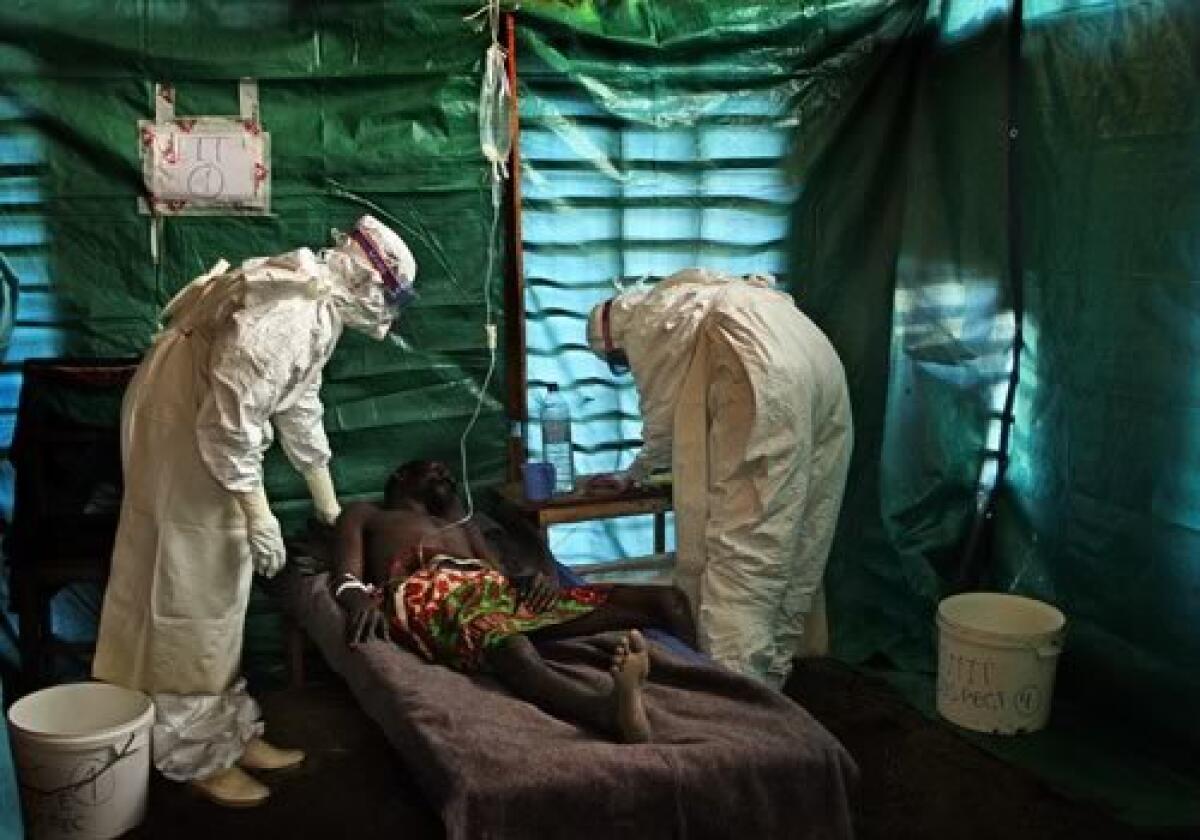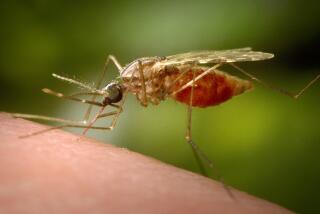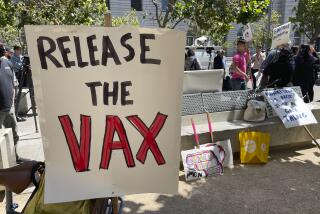Op-Ed: Should you be worried about Ebola? It depends on where you live

The latest outbreak of the deadly hemorrhagic virus Ebola has claimed more than 1,800 lives in Congo and been declared a Public Health Emergency of International Concern by the World Health Organization. But how worried should other nations be about its spread?
It depends. The danger of Ebola does not lie solely in the disease itself, but in the socioeconomic conditions of the places affected. People who contract Ebola are three to four times less likely to die from it if they are treated in a high-income country such as the United States rather than in places like the Democratic Republic of the Congo or western Africa, where the 2014 epidemic occurred.
International news coverage of the Ebola epidemic often focuses on the chance of it spreading to wealthy countries. But even if that were to happen, the disease wouldn’t be as deadly. In a study examining Ebola survivors who were treated in the United States and Europe, the mortality rate was only 18.5% compared to 50% to 90% in past Ebola outbreaks in Sub-Saharan Africa (the current outbreak has a mortality rate of nearly 70%). Why such disparity? Because it is not Ebola alone that is catastrophically deadly; it is the combination of Ebola and poverty.
As a global health doctor, I have studied many epidemics, including ones involving HIV, tuberculosis and Zika, and have seen again and again how much deadlier these diseases are in places where patients are impoverished and healthcare systems are struggling.
Ebola, while infectious, is actually far less so than many other pandemic-prone illnesses, such as measles or influenza. On average, one Ebola-infected individual will infect 1.5 to two others, compared to 18 for measles. The risk of Ebola spreading has less to do with Ebola itself, and far more to do with the conditions under which the disease is present. In highly populated, dense cities such as Goma, Congo, the risk of Ebola spreading quickly is much higher than it would be in a wealthy nation, where cities are, on average, less dense.
The announcement this week that two monoclonal antibodies, REGN-EB3 and mAB-114, are potential Ebola cures was encouraging news. But it also underscores the gap between rich and poor healthcare systems. Even with the medications, mortality rates remained in the 30% range, which is still higher than the 18.5% reported in patients treated without the drugs in the U.S. and Europe nearly five years ago. While the treatments have the potential to be game-changers, one crucial detail is that they are being provided free of charge in Congo as “compassionate use” medicines, and it is unclear how long that will continue. If they were sold at market prices, the new drugs would likely be far too expensive for those who need them.
I have seen repeatedly in the course of my work how it isn’t enough to treat only the patient. Severe poverty drives the spread of many diseases, and it must be addressed as well. A seminal body of work from global health guru Dr. Paul Farmer and his colleagues has repeatedly shown that patients have far better outcomes if they receive not just treatment for their illnesses, but also financial support and social support from community health workers.
With Ebola, even before the discovery of new medications, we had effective protocols for treating patients. Ebola causes the body’s immune system to go into hyper-drive, causing an inflammatory reaction that damages blood vessels. People bleed internally and are susceptible to additional infections once the body is weakened. In the infected patients who returned to the United States and Europe from Sub-Saharan Africa, adequate supportive measures were provided in tertiary care hospitals. These included ventilator support, vasopressor medications, central venous catheter access and adequate antibiotic treatment for bacterial super-infections.
But this level of critical care is not widely accessible at most Ebola care units or in general in countries that have been primarily affected by Ebola in recent years. Nor have there been adequate primary health system resources for accurate disease mapping and rapid contact tracing that could help stop Ebola from spreading.
Another critical manifestation of poverty in the Congo Ebola epidemic has been the significant violence from rebel warfare. Violence has been a primary driver of the current epidemic and has prevented public health forces from safely testing and treating patients at scale. The inextricable links between violence and poverty have been well studied and proven: Poor places are more prone to violent conflict and violence further impedes the ability to efficiently address disease outbreaks.
Without such widespread poverty and struggling social and governmental institutions -- part of the legacy of colonialism in Sub-Saharan Africa -- Ebola would likely never have gotten a foothold. To prevent the next epidemic, we must address the underlying impoverishment that plagues the countries at highest risk.
Abraar Karan is an internal medicine resident in the Hiatt Residency in Global Health Equity at the Brigham and Women’s Hospital and Harvard Medical School.
More to Read
A cure for the common opinion
Get thought-provoking perspectives with our weekly newsletter.
You may occasionally receive promotional content from the Los Angeles Times.






